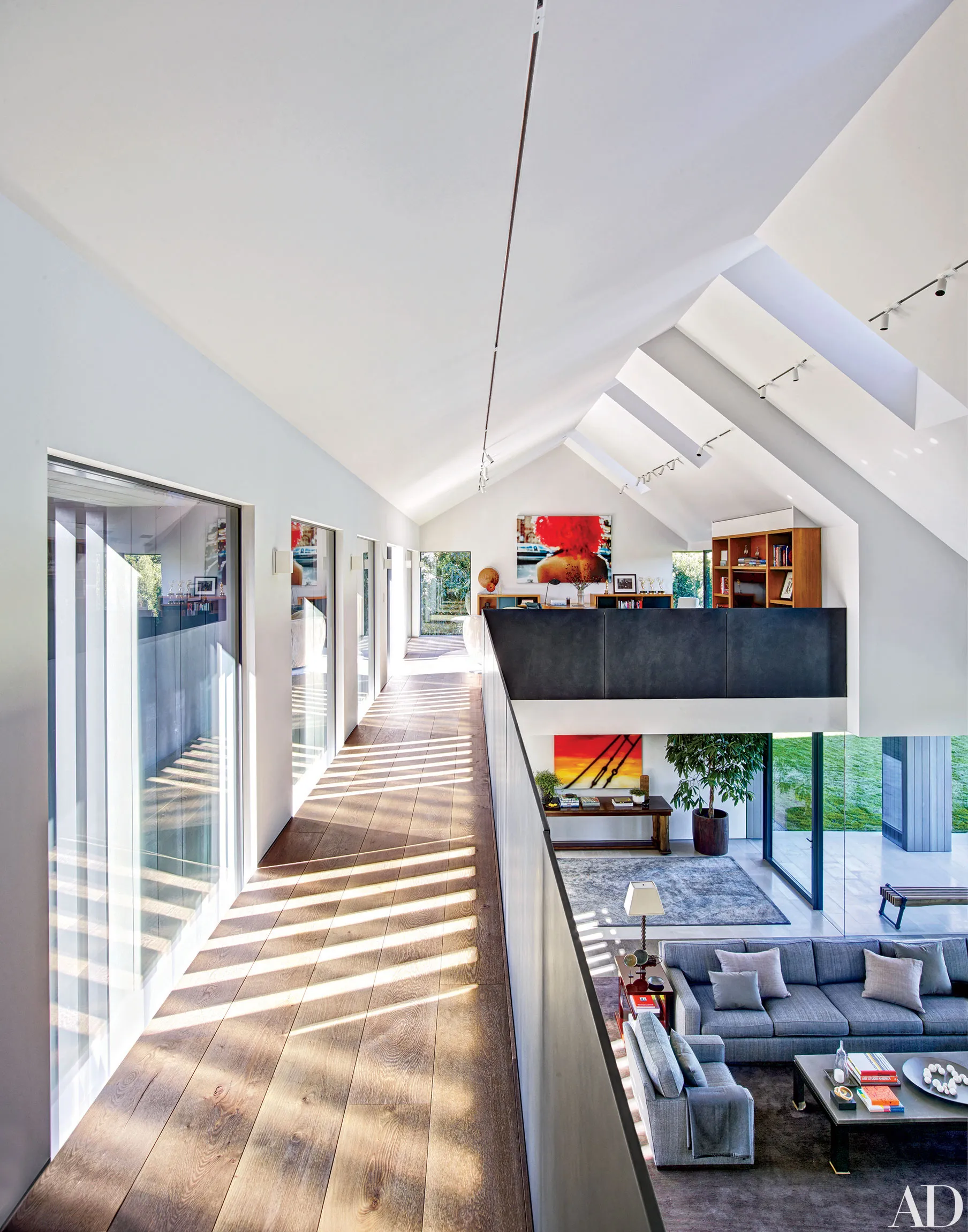Imagine stepping into a home where every nook and cranny is transformed into a work of art. Enter the world of residential mezzanine finishing, a transformative technique that unlocks the hidden potential of your attic space. With mezzanines, you can create an elegant and practical oasis, expanding your living area without breaking the bank.
This comprehensive guide will unravel the secrets of mezzanine finishing, from the sparks of inspiration to the meticulous execution. It’s like getting a personalized blueprint for creating a stunning and functional living space that seamlessly blends with your existing home. Whether you’re looking to make the most of your space, enhance safety, or explore unique design options, this guide has you covered.
Let’s dive in and discover the art of residential mezzanine finishing, and watch your home reach new heights of stylish sophistication.
Residential Mezzanine Finishing: Giving Your Space a Facelift
So, you’ve got yourself a mezzanine – that’s awesome! Now comes the fun part: making it look amazing. This is where residential mezzanine finishing comes in. Think of it like choosing the perfect outfit for your new space. It’s not just about looks, though; it’s also about picking materials that can handle the daily grind.
Let’s dive into some popular options:
1. The Classic Combo: Primer and Paint
This is the tried-and-true method everyone’s familiar with. You apply a primer as a base coat, then get creative with your favorite paint colors.
Pros:
- Easy on the Wallet: Primer and paint are budget-friendly, leaving you more cash for cool furniture.
- Rainbow of Choices: From bold hues to subtle shades, the color possibilities are endless. You can even get creative with different finishes like matte or glossy.
- Cover-Up King: Got an old finish you want to hide? No problem, primer and paint will do the trick.
Cons:
- Chip Happens: Paint can chip or scratch over time, especially in high-traffic areas.
- Not-So-Tough Cookie: Compared to other options, paint might not be as resistant to scratches, scuffs, and moisture.
2. The Superhero Finish: Powder Coating
Imagine a finish so tough, it laughs in the face of scratches and rust. That’s powder coating! It involves electrostatically charging the metal and then baking on a powder coating for a super-durable finish.
Pros:
- Built to Last: Powder coating is like the Superman of finishes – incredibly durable and resistant to pretty much everything life throws at it.
- Smooth Operator: This finish gives a sleek, uniform look that’s incredibly satisfying.
- Color Me Impressed: You’ve still got a wide array of colors and even textures to choose from, so you don’t have to sacrifice style for strength.
Cons:
- Pricey Protection: All that durability comes at a cost – powder coating is typically more expensive than paint.
- DIY? Not So Much: This isn’t a job you can easily do yourself. You’ll need a professional with specialized equipment.
3. The Industrial Ironclad: Galvanizing
If your mezzanine is all about that rugged, industrial vibe, galvanizing might be your jam. It involves dipping the metal into a hot zinc bath, creating a super tough, rust-resistant coating.
Pros:
- Rust-Proof Warrior: Galvanizing laughs in the face of rust and corrosion. Seriously, it’s practically invincible.
- Built Like a Tank: This finish is incredibly long-lasting and can withstand even the harshest conditions.
Cons:
- Matte is It: You’re limited to a matte, metallic finish, which might not be everyone’s cup of tea.
- Not-So-Pretty Price Tag: Like powder coating, galvanizing is an investment.
Picking the Perfect Finish: A Quick Checklist
So, how do you choose the right finish? Ask yourself these questions:
- What’s My Budget? Be realistic about how much you want to spend.
- What Vibe Am I Going For? Industrial chic? Modern minimalist? Your style matters!
- How Will I Use This Space? Is it a relaxing reading nook or a high-traffic home office?
Remember, there’s no right or wrong answer. It’s all about finding the finish that best suits your needs, style, and budget.
What are the Different Types of Residential Mezzanine Finishes?
Choosing the right finish for your mezzanine is a big deal. It impacts the look, durability, and even the functionality of the space. Let’s explore the most popular options:
1. Primer and Paint: The Versatile All-Rounder
This classic approach provides a cost-effective way to achieve a polished look. Primers create a smooth base for the paint, ensuring better adhesion and a more even finish. Paints offer limitless color options, allowing you to match your existing décor or create a bold statement.
- Best for: Budget-conscious homeowners who want design flexibility and a fresh, clean aesthetic.
2. Powder Coating: The Durable Champion
Powder coating involves applying a dry powder to the metal surface, which is then cured under heat, creating a hard, protective layer. This finish is incredibly resistant to scratches, chipping, fading, and even corrosion, making it ideal for high-traffic areas.
- Best for: Mezzanines exposed to heavy wear and tear, moisture, or harsh conditions.
3. Galvanizing: The Rust-Proof Guardian
For the ultimate in rust and corrosion protection, galvanizing is the way to go. This process involves dipping the metal into a molten zinc bath, forming a protective zinc coating that bonds metallurgically to the steel. While galvanizing generally comes in a matte gray finish, it can be painted over for a more customized look.
- Best for: Mezzanines in humid climates, coastal regions, or industrial settings where moisture and the elements pose a threat.
Here’s a handy table summarizing the pros and cons of each finish:
| Finish Type | Pros | Cons |
|---|---|---|
| Primer and Paint | Budget-friendly, tons of color options, easy to change up | Can chip or fade, needs regular maintenance |
| Powder Coating | Almost indestructible, resists scratches and rust, looks super sleek | Can be a bit pricier than paint |
| Galvanizing | The ultimate rust-buster, perfect for harsh environments | Might have a more industrial look |
No matter what you choose, factor in your budget, expected wear and tear, and your own style preferences. With the right finish, your mezzanine will be a functional and stylish addition to your home.
How Do I Choose the Right Residential Mezzanine Finish for My Space?
Congratulations on adding a mezzanine to your home! Now, let’s find the perfect finish to make it truly shine. This choice goes beyond aesthetics; it impacts the functionality and longevity of your new space.
Here’s a guide to help you make the best decision:
1. Budget and Desired Look
- Set a Budget: Mezzanine finishes come in a range of prices, impacting your overall project cost. Consider your budget limitations early on.
- Define Your Style: Whether you envision an industrial-chic loft, a rustic retreat, or a sleek, modern addition, your chosen finish should complement your existing décor and desired ambiance.
2. Understanding Finish Characteristics
- Paint: The Customizable Choice: Paint offers endless color possibilities and various sheens, from matte to high-gloss. It’s a versatile option for achieving different looks and is relatively easy to touch up if needed. However, paint is more susceptible to scratches and wear.
- Powder Coating: The Durable Defender: If your mezzanine will see a lot of action, powder coating provides unparalleled durability. This finish is resistant to scratches, fading, and even chemicals, making it ideal for high-traffic areas or homes with children and pets.
- Galvanizing: The Rust-Proof Warrior: For the ultimate in corrosion protection, galvanizing is the answer. This finish is perfect for humid climates, areas prone to moisture, or industrial-style mezzanines. While it typically comes in a matte gray, it can be painted over for a more customized appearance.
3. Practical Considerations
- Lighting and Ambiance: Consider how the finish will interact with light. Lighter colors can make a space feel larger and brighter, while darker tones create a cozy, intimate atmosphere.
- Sound Absorption: Certain finishes absorb sound better than others. If noise reduction is a priority, opt for materials known for their sound-dampening qualities.
- Sustainability: If eco-friendliness is important to you, explore finishes made with sustainable materials, low VOCs (volatile organic compounds), and environmentally friendly manufacturing processes.
4. Safety First
Always ensure your chosen finish meets local building codes and safety regulations. Consult with a qualified contractor or architect to ensure your project adheres to all safety standards.
5. Professional Consultation
When in doubt, don’t hesitate to seek professional guidance. An experienced contractor can assess your space, understand your needs, and recommend the most suitable finish for your unique mezzanine project.
Remember, finishing your mezzanine is an opportunity to express your personal style and enhance the functionality of your home. Enjoy the process and love the stunning new space you create!
What is the Cost of Residential Mezzanine Finishing?
Adding a mezzanine to your home is a fantastic way to create more living space without the expense of a full-blown extension. But, of course, you’re wondering about the cost. Let’s break down the factors that influence the price of residential mezzanine finishing:
Factors Affecting Mezzanine Finishing Costs
- Size Matters: Just like any construction project, a larger mezzanine means more materials and labor, leading to a higher overall cost.
- Material Choice: Different materials come with different price tags. Steel is known for its strength and durability but is pricier than wood.
- Design Complexity: A simple, rectangular mezzanine is more straightforward (and affordable) to build than one with intricate curves, angles, or custom features.
- Location, Location, Location: Labor costs fluctuate depending on where you live. Big cities and areas with a high cost of living often have higher labor rates.
Estimated Cost Breakdown
- Materials: Steel is the most expensive option, followed by wood. Additionally, factor in the cost of flooring, railings, finishes, and any other decorative elements.
- Labor: You’ll need skilled professionals like carpenters and welders. Expect to pay an hourly rate, which can range from $20 to $40 per hour or more depending on your location and the project’s complexity.
Don’t Forget These Additional Expenses:
- Building Permits: You’ll likely need permits from your local authorities, and fees vary depending on your location.
- Insurance: It’s always wise to have adequate insurance coverage for any construction project to protect yourself financially in case of unexpected events.
Average Cost Range
As a rough estimate, a residential mezzanine can cost anywhere from £5,000 to £15,000 or more for large or complex designs. Keep in mind that this is just a general range.
Pro Tip: To get a more accurate idea of costs specific to your project:
- Get Quotes: Reach out to several local contractors specializing in mezzanines and request detailed quotes.
- Provide Detailed Plans: Be prepared to share your desired design, material preferences, and any specific features you envision to ensure accurate pricing.
Remember, investing in a well-designed and finished mezzanine can significantly increase your home’s value and functionality. While cost is a crucial factor, don’t be afraid to prioritize quality materials and craftsmanship for a long-lasting and beautiful addition to your living space.
Important Points: Residential Mezzanine Finishing
Understanding Your Options:
- Primer and Paint:
- Affordable and offers design versatility with numerous color and finish options.
- Susceptible to wear and tear, requiring occasional touch-ups or repainting.
- Powder Coating:
- Exceptionally durable and resistant to scratches, fading, corrosion, and even chemicals.
- Provides a smooth, uniform finish with various color and texture possibilities.
- More expensive than paint and requires professional application.
- Galvanizing:
- Offers superior rust and corrosion resistance, making it ideal for humid or harsh environments.
- Typically comes in a matte metallic finish but can be painted over for a customized look.
- More expensive than primer and paint and requires specialized equipment and expertise.
Factors to Consider When Choosing a Finish:
- Budget: Establish a realistic budget for your mezzanine finishing project.
- Aesthetic: Determine the desired style and ambiance you want to achieve.
- Usage: Consider the intended use of the space, including foot traffic and potential wear and tear.
- Location: Factor in your geographical location and climate, especially when considering moisture and rust concerns.
- Safety: Ensure your chosen finish complies with local building codes and safety regulations.
Internal Links for Further Exploration:
Do you ever wonder how to accurately represent open mezzanine floors during energy modeling? Learn more about how to calculate the energy consumption of open mezzanine floors and other important topics related to mezzanine floors. For those interested in the meaning of “mezzanine floor” in Tamil, here’s what you need to know. Additionally, if you’re curious about the legal height requirements for mezzanines, check out this helpful resource.
- Greenhouse Storage Shed Combos: Your Guide to Combining Growing and Storage - April 21, 2025
- Greenhouse Shed Combo: Design, Build & Grow Year-Round - April 21, 2025
- Gingham vs. Plaid: What’s the Difference? A Complete Guide - April 21, 2025










